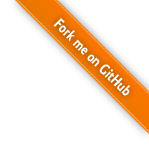
23.09.2013 Uncategorized
EarthServer is an EU-funded project aimed at establishing open access and ad-hoc analytics on extreme-size Earth Science data. Part of this endeavor is the development of tools for 3D web access to these data endpoints that respect the protocols and languages common in the geospatial data processing domain, specifically various OGC standards. The EarthServer 3D Web Client middleware is built on top of X3DOM and currently under active development.
12.09.2013 Release
We are proud to announce the release of X3DOM 1.5. This most recent installment of our popular Declarative3D polyfill shines with lots of new features and a wagon load full of bugfixes.
With version 1.5, X3DOM also overcomes some limits of the scenegraph structure by using new internal structures for culling and fast rendering, decoupled from the frontend graph inside the DOM, which, however, still remains intact as usual.
For a detailed list of changes refer to the CHANGELOG file.
Grab the frozen 1.5.0 version here or fly with the cutting-edge development version here.
Showcase Technical
Back in June we’ve presented a prototype of a new RESTful interface to exchange graphics based data values across networks at Web3D 2013. This interface can be used to query data from a running application, modify or use it to display something. Said prototype is implemented inside InstantIO, the hardware component of Instant Reality which supports more than 40 devices. For the first time now, you’re able to query hardware information from InstantIO through Javascript from a browser. We’ve set up a tutorial on how to connect a Oculus Rift HMD to an X3DOM application: X3DOM renders a scene as distorted stereo image but connects via REST API to a local InstantIO server, opens a WebSocket connection on the orientation field of the Oculus and uses the incoming data to rotate the view!
You can do this of course with arbitrary hardware (think of the LEAP support or the Kinect), but please bear in mind that this is only a preview at the moment.
You can find the tutorial here. Enjoy!
|